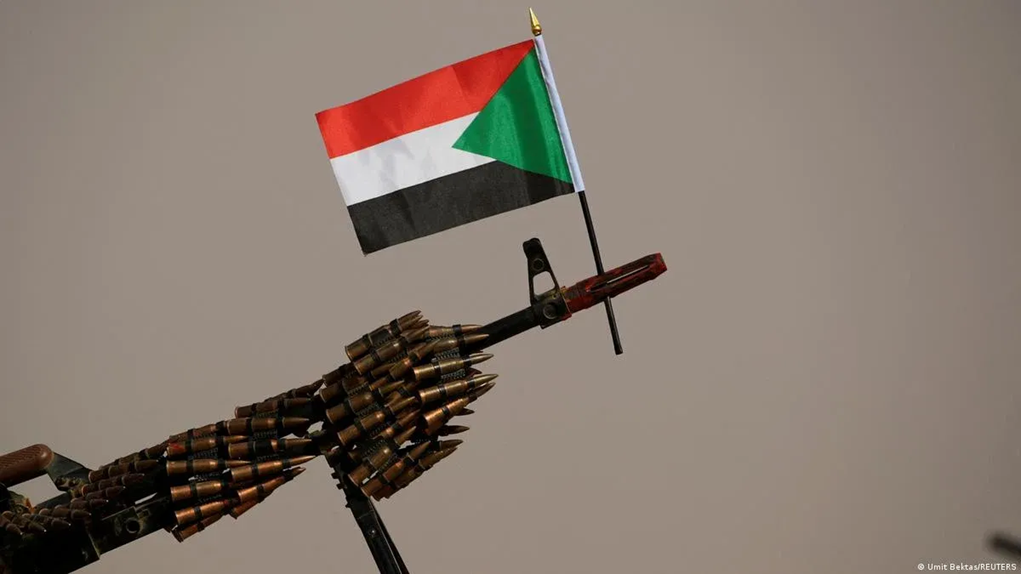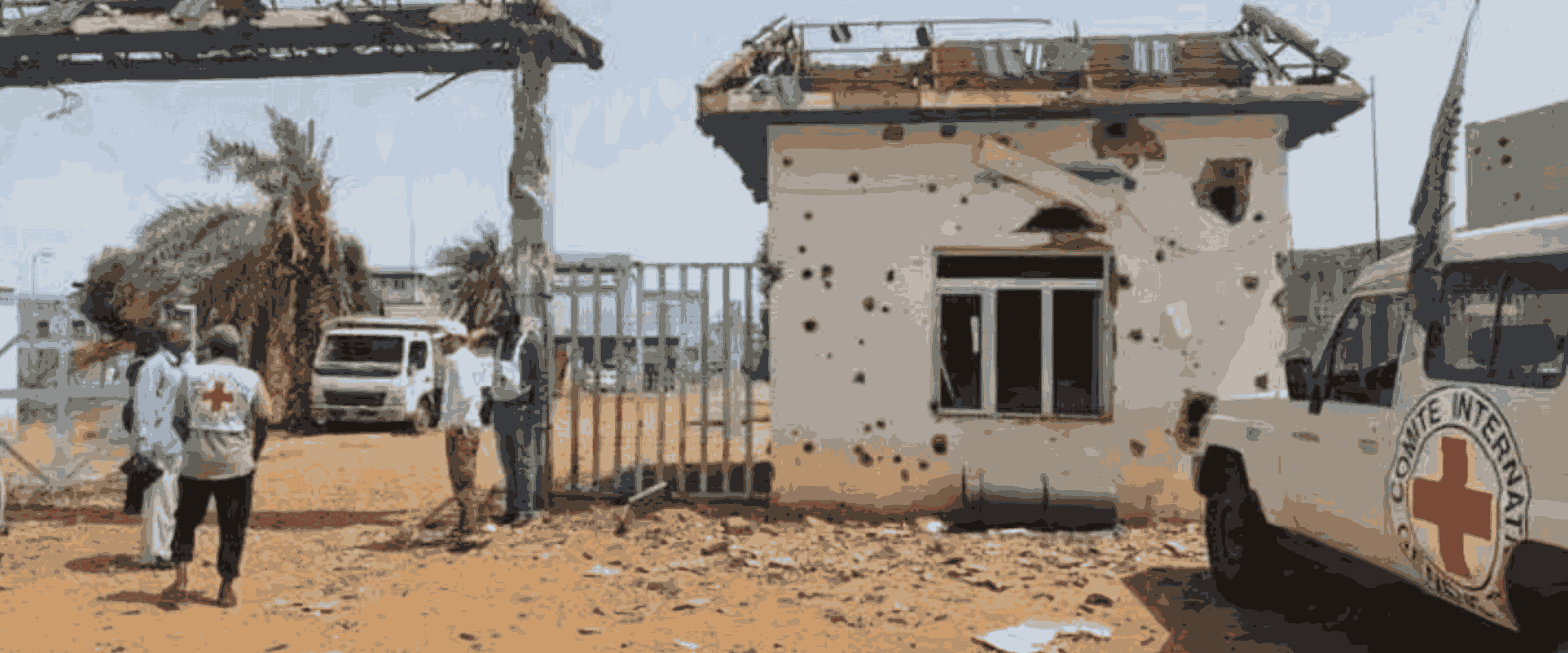
Source: Reuters
Saturday, April 15, witnessed the beginning of clashes between the Sudanese Armed Forces (SAF) and the Rapid Support Forces (RSF) in the Sports City in Khartoum. The battlefield rapidly expanded to the cities of Khartoum Bahri and Omdurman, and later to the Darfur and Kordofan regions.
“Chaos theory” describes the characteristics of the point at which stability transitions into instability, or order transitions into chaos. This perception perfectly describes the situation in the capital, Khartoum, which is witnessing chaos and catastrophic circumstances, in addition to instability in the security and humanitarian conditions.
During these clashes, civilians have been assaulted and murdered, faced systematic robbery and looting of houses and properties, besides food and water shortages, power outages, and the collapse of health services. With more than 7 months since the start of the conflict, in regions like Darfur, acts of violence, mass displacement, and gross human rights violations are being committed.
An IOM displacement tracking matrix estimates that as of early November, more than 4.8 million people have fled their houses in Khartoum to other locations within the state or to other states. The number of displaced people within Khartoum State is estimated at approximately 62,785 people (about 1.28% of those displaced from the state) who took refuge in the localities of Bahri, Jabal Awlia, Karari, Khartoum, Sharq Al-neel, Ombaddah, and Omdurman.” About 68% of those displaced to other states have been displaced from Khartoum.

Internally displaced people statistics in Sudan. Source: International Organization for Migration (IOM)
Khartoum/Bahri city center
The city of Khartoum Bahri, commonly referred to as “Bahri” by its residents, is geographically located north of the capital, Khartoum. Due to the geographical proximity between the center of Bahri and the clashes sites, the first days witnessed the killing of a young man from the Al-Mazad area as a result of a shell that fell nearby, in addition to injuries and damage to houses in various areas of Bahri city center.
The second day of clashes resulted in the the complete destruction of Bahri water station due to the massive damage that befell the station, which forced people to leave their houses in search of sources of water. People desperately had to search for water wells, some heading in the direction of Ahmed Qasim Hospital in Al-Mazad, or to the Nile River.

A joint technical team from the Red Cross, Bahri water engineers and the Sudanese Electricity Company visited the Bahri water station in order to assess the damage caused to the station. Source: Sovwac.net
The tragic events continued with looting and robbery, starting with the Bahri and Saad Geshra markets, passing through the electronics stores in Al-Maouna Street (Al-Mouasasa), the central market in Shambat, in addition to some banks and shops. Even factories located in the Bahri Industrial Zone were not spared from looting and vandalism.
Health facilities including Bahri and Haj Al-Safi hospitals were out of service since the first days of the clashes' outbreak, making the International Hospital in Al-Shabiyah the only one that was receiving the injured, despite the lack of medical personnel and equipment and materials to treat them.
Saturday, April 22, witnessed ground clashes between SAF and RSF on Martyr Matar Street, Al-Mazad Street all the way to the intersection with Al-Maouna Street, which caused damage to some houses and an electricity transformer. This led to power outages in the neighborhoods of Bahri city center with the exception of some blocks.
Many residents of those areas lost their ability to withstand the increasing intensity of the clashes and the worsening conditions, including poor telecommunication networks, food shortages, and lack of medicines and health care. This unfortunate situation led to a wave of panic that prompted the people of central Bahri to flee north to safer and more stable areas.
Khartoum/North Bahri
The North of Bahri could best be described as safely existing on another planet or separated from reality because life there was peaceful and normal. It was far from the clashes in the first weeks and was more stable and a safe haven for all those fleeing the center of Bahri.
Not even a month had passed since clashes began when the Rapid Support Forces expanded into those areas, shifting from the center of Bahri to also include the north all the way to Al Jaili oil refinery. The scene changed dramatically in North Bahri, with the expansion of the RSF into those areas and then a series of clashes between SAF and RSF began there.
Wednesday, May 24, the early hours of the morning witnessed an exchange of heavy artillery fire between SAF and RSF, following the entry of the Rapid Support Forces into Al-Surujiyah area, north of Al-Kadro, to attack the Wadi Saydna Air Base.
The areas of Al-Halfaya Bridge, Al-Kadaro, Al-Saroujiyah, Al-Khujalab, and neighboring areas witnessed violent ground confrontations, in addition to air strikes and the continuous sound of explosions, which led to deaths, injuries, and damage to farms and houses. This, in addition to the worsening conditions, prompted thousands to flee northward to Wawesi, Atbara, Shandi, and other areas.
Between the center and the north
The central area witnessed power outages, lack of water, bad living conditions and telecommunications networks, lack of health care, looting, and robbery of houses and markets, in addition to the storming of some homes by the RSF. The northern area witnessed violent ground clashes, air strikes, and some shells falling on houses leaving behind victims and many wounded, in addition to the cessation of markets and shops and telecommunication network outages.
The suffering of the stranded and the disaster of corpses scattered in the streets
Citizens stranded in Khartoum as a result of the continuing battles continue to suffer from lack of services and poor living conditions. This is in addition to the continuous violations by the Rapid Support Forces and the difficulty of leaving homes due to the continuing clashes.
Many families have been forced to bury their dead in their homes due to the difficulty of reaching the cemeteries. Not to mention the spread of hundreds of corpses on Martyr Matar Street, the central market in Shambat, and the streets of Khartoum in general. International organizations have warned that this could lead to a major spread of epidemics and diseases, which poses a threat to the population as the death toll continues to increase.